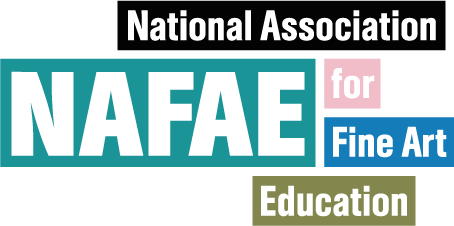Abstract
In a pre-pandemic world, the Wolverhampton School of Art was developing a keen community of printmakers through Print Club. Taking place every Wednesday evening, students and staff from a range of subjects came together to make alongside each other. Printmaking deals in multiplicity through its physical manoeuvres, but also through its spatial relations. Doreen Massey (2005, 148) conceptualises space as ‘contemporaneous multiplicity’ which is always ‘under construction’ and embedded within material practices. The print workshop is a space of multiplicity, a product of inter-relations between people and place in which disparate trajectories co-exist. For instance, collective moments of social interaction orbit around a printing press, offering opportunity to observe and learn from the experience of others, to follow or find alternative means of expression.
In a period of immense spatial upheaval initiated by the pandemic, the relationship between public and private space; virtual and actual spaces blurred. Within Higher Education (HE), the shift to online delivery particularly impacted arts subjects. With the closure of studios and specialist workshops, a ‘hybrid model’ of teaching and learning was swiftly adopted, attempting to replicate humanistic practices in digital spaces. Concerned with the theorisation of hybridity away from corporatisation, our experiences of teaching printmaking during the pandemic attempt to invoke the multiplicity and ‘risky knowledge- making endeavours’ that are ‘messy and rife with boundary crossings’ in which ontological and epistemological hybridity is formed (Wilson, 2009). This paper recalls how printmaking relations on a BA (Hons) Fine Art course have been ‘stretched out’ across space during Covid-19 and what new insights and situated knowledges have been gathered through the slow re-consolidation of the spaces-in-between.
Posting out ‘care packages’ containing key materials for making a dry point etching, collagraph plates, pre-sensitised paper for cyanotypes, matchboxes to make pinhole cameras, developing tanks and alternative recipes for developing films (ingredients which could be sourced via the online supermarket shop) invited a clash of trajectories into the domestic space. These materials carry a set of languages and practices which may seem ‘at odds’ with their final destinations - our homes and the homes of our students - in which distinct and new subjectivities would be encountered. The space of the print rooms de-territorialised from the traditional flat- bed printing presses and were re-territorialised into domestic space and kitchen tables connected not in physical space but on-line via web-cams. This space subsequently de-territorialised from the domestic and re-territorialised as the community returned to the print rooms with a changed understanding.
The social infrastructures supported by printmaking is a theme that will be crystallised through this paper drawing upon philosophies of social practice and alternative geographies to form a reappraisal of the narrative of printmaking. Expert in community development, Alison Gilchrist extrapolates an ‘edge of chaos model’ for the development of communities; “in an uncertain, turbulent world, systems operate best within an intermediate zone along the continuum, somewhere between rigidity and randomness.” (Gilchrist, 2000). This ‘in-between’ states model offers an insight into how processes of printmaking may mirror the formation of a post-pandemic community.
Bios
Laura Onions is an artist and lecturer for BA (Hons) Fine Art at the University of Wolverhampton. Laura has presented print-led research in national and international conferences focusing on the collective spaces of printmaking and the ways in which we support and hold onto knowledge through printed matter.
Simon Harris is an artist and a senior lecturer for the BA(Hons) Fine Art at the University of Wolverhampton. Simon was awarded a PhD in 2016 and recent exhibition Two worlds and in between at General Practice presented a new body of paintings, prints and pinhole photography.

